| Srl | Item |
| 1 |
ID:
105786
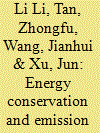

|
|
|
|
|
| Publication |
2011.
|
| Summary/Abstract |
Because of China's increasingly limited energy supplies and serious environmental pollution, much attention has been paid to conserving energy and reducing emissions to help the country's economy achieve sustainable development. As the electric power industry is the largest consumer of coal resources in China and also emits high levels of air pollutants each year, the Chinese government has enacted many technical and economic policies for energy conservation and emission reduction in the last few years. These policies are summarized in this paper, along with relevant laws and medium- and long-term plans, all of which address ideas such as adjusting the power generation mix, promoting demand-side management, introducing energy-efficient scheduling, and installing desulfurization units. The paper also assesses the results of these policies by analyzing several key indicators of energy consumption and emissions. The analysis shows that although some progress has been made in conserving energy and reducing emissions, substantial work is still required for China to catch up with developed countries. Some suggestions for future work are provided.
|
|
|
|
|
|
|
|
|
|
|
|
|
|
|
|
| 2 |
ID:
098645
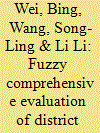

|
|
|
|
|
| Publication |
2010.
|
| Summary/Abstract |
Selecting the optimal type of district heating (DH) system is of great importance because different heating systems have different levels of efficiency, which will impact the system economics, environment and energy use. In this study, seven DH systems were analysed and evaluated by the fuzzy comprehensive evaluation method. The dimensionless number-goodness was introduced into the calculation, the economics, environment and energy technology factors were considered synthetically, and the final goodness values were obtained. The results show that if only one of the economics, environment or energy technology factors are considered, different heating systems have different goodness values. When all three factors were taken into account, the final ranking of goodness values was: combined heating and power>gas-fired boiler>water-source heat pump>coal-fired boiler>ground-source heat pump>solar-energy heat pump>oil-fired boiler. The combined heating and power system is the best choice from all seven systems; the gas-fired boiler system is the best of the three boiler systems for heating purpose; and the water-source heat pump is the best of the three heat pump systems for heating and cooling.
|
|
|
|
|
|
|
|
|
|
|
|
|
|
|
|
| 3 |
ID:
099599
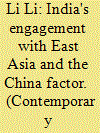

|
|
|
| 4 |
ID:
118835
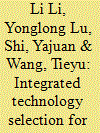

|
|
|
|
|
| Publication |
2013.
|
| Summary/Abstract |
Energy conservation and PAHs (polycyclic aromatic hydrocarbon) control are two challenges for the iron and steel industry, especially where the industry has developed at high speed. How to select appropriate technologies to improve energy efficiency and control pollution from PAHs simultaneously is encountered by both the researchers and the decision makers. This study sets up a framework on technology selection and combination which integrates technology assessment, multiple objective programming and scenario analysis. It can predict proper technology combination for different emission controls, energy conservation targets and desired levels of production. An iron and steel factory in Southwestern China is cited as a case. It is shown that stricter PAHs control will drive the transformation from process control technology to alternative smelting technology. In low PAHs limit, 25% energy reduction is a threshold. Before inclusion of a restraint on energy consumption at 25% reduction, PAHs emission is the key limiting factor for the technology selection; while after inclusion of this restraint, energy consumption becomes the key limiting factor. The desired level of production will also influence the technology selection. This study can help decision makers to select appropriate technologies to meet the PAHs control objectives and energy conservation strategies in energy-intensive industries.
|
|
|
|
|
|
|
|
|
|
|
|
|
|
|
|
| 5 |
ID:
151178
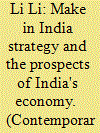

|
|
|
| 6 |
ID:
120531
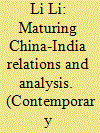

|
|
|
|
|
| Publication |
2013.
|
| Summary/Abstract |
In spite of occasional troubles such as visa and border disputes, and the Tibet issue, strategic cooperation has been steadily enhanced, and exchanges on economic, cultural, and military fronts have been comprehensively promoted. Whether or not future China-India relations will continue to be marked by the positive momentum of development is dependent upon their staying the course set by the Strategic and Cooperative Partnership and effectively managing their bilateral differences.
|
|
|
|
|
|
|
|
|
|
|
|
|
|
|
|
| 7 |
ID:
163330
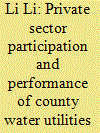

|
|
|
|
|
| Summary/Abstract |
In the early 1990s, China opened its urban water sector to private investors to secure the country's growing urban water demand. In Chinese counties which accommodated around 195 million urban population in 2012, private sector participation (PSP) has progressed slowly but steadily among the county-level water utilities. Using a panel data set extracted from the annual surveys conducted by the National Bureau of Statistics of China (1998–2006), we exploit the changes in the PSP status of water utilities and apply a fixed-effects model to identify the causal effects of PSP on 12 performance indicators. We find that utilities with private investment enjoyed significant performance improvement in three areas: output, financial performance and profitability, and efficiency. Using supplementary data from population censuses and statistical yearbooks, we find that water quality is slightly lowered under PSP, while no significant effect is detected for the other service outcomes. The findings suggest that a greater role of PSP in the urban water supply sector of Chinese counties could be promoted.
|
|
|
|
|
|
|
|
|
|
|
|
|
|
|
|
| 8 |
ID:
101938
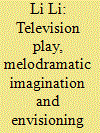

|
|
|
|
|
| Publication |
2011.
|
| Summary/Abstract |
The television play has been recognized by scholars as the most influential genre in the flourishing television industry in China's new media landscape; yet little critical attention has been given to inquiry of why and how it functions as a dynamic cultural agent in the Chinese people's reconfiguration of their past and imagining of their everyday life. This paper investigates the intriguing socio-historical environment from which the genre emerged and its unique modes of operation by focusing on the television play of sentiment. It demonstrates that the television play embodies the many complex aspects of social forces and relationships contested in China's reform, suggesting, all at once, commercialization in Chinese society, the popular imaginary of morality and the state's conceptualization of a 'harmonious society', a strategic policy aiming at maintaining social balance while bypassing some of the thorny political questions in the post-revolution era.
|
|
|
|
|
|
|
|
|
|
|
|
|
|
|
|